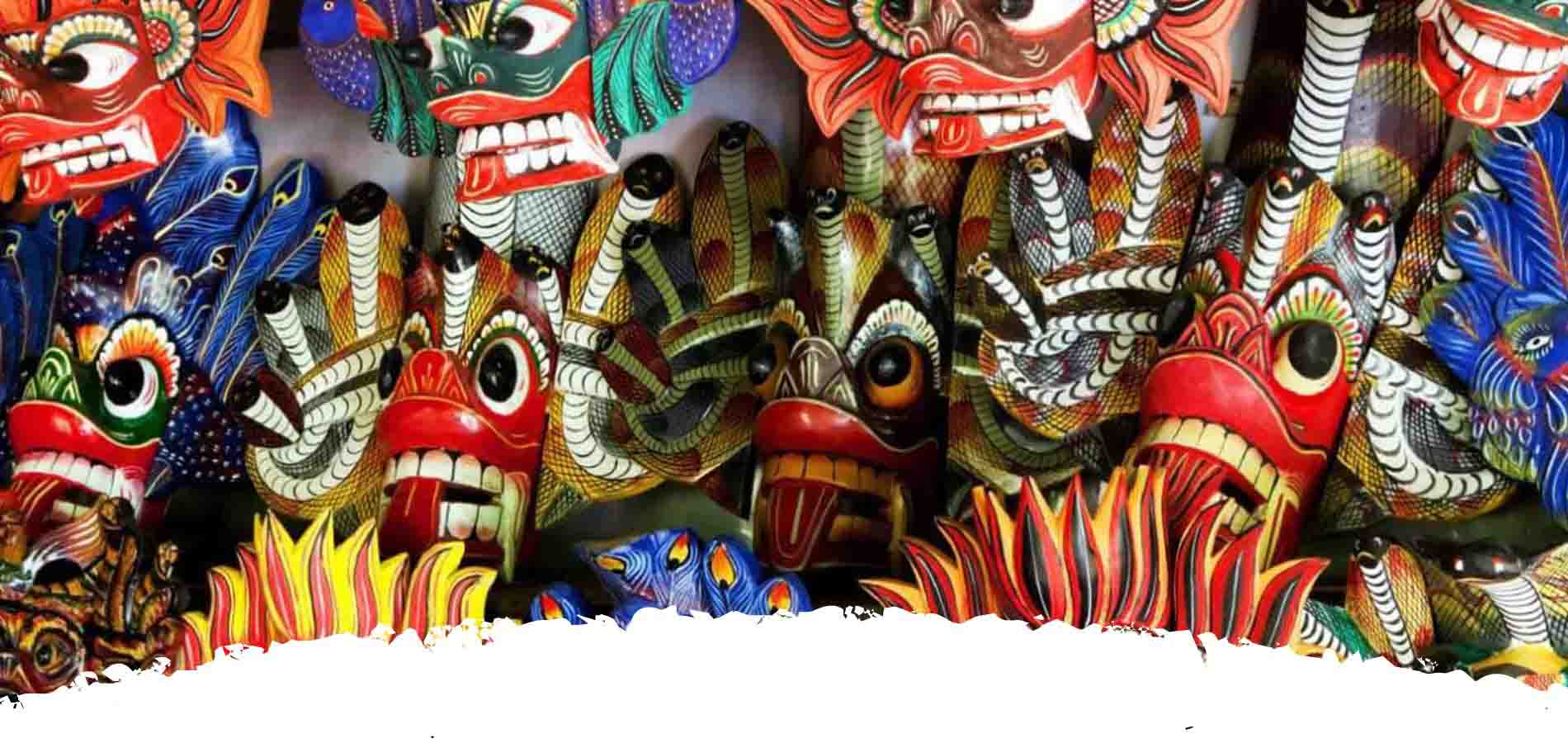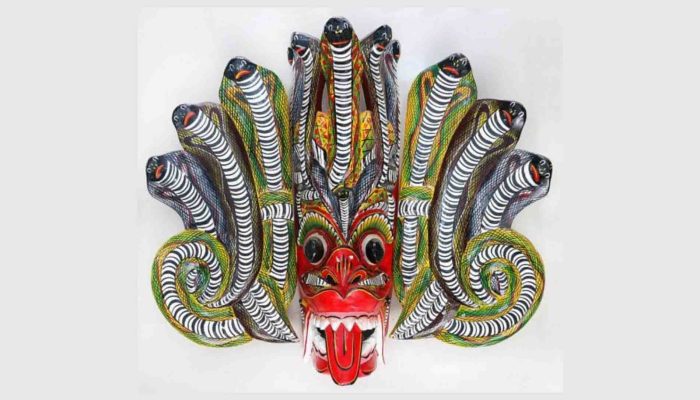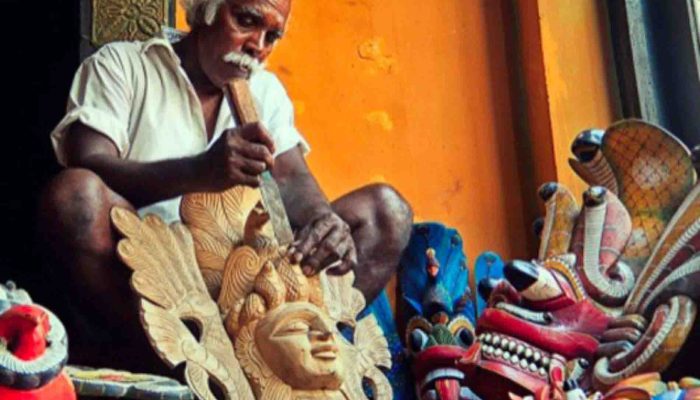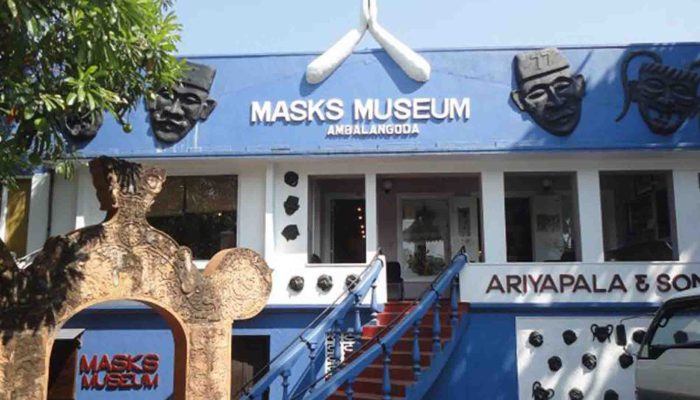About the mask industry
traditional mask industry in Sri Lanka occupies a special place. This industry has been around for generations and is still going strong as an important factor in revealing the greatness of Sri Lankan heritage to the world. Sri Lankan traditional masks are a unique tradition combined with fascinating shapes and colors. It is also seen that these masks are used for various rituals and dance performances. In addition, there are beliefs that such masks have healing and protective powers.
So far this reason there is a good demand for traditional masks industry in Sri Lanka. Such traditions are especially common in the southern province. (Galle, Matara, Bentara, Ambalangoda). So, it is a unique cultural handicraft heritage of the country.
Suggested Read:Galle Day Tour
History of the traditional mask industry in Sri Lanka
The traditional mask industry in Sri Lanka has a long history. Masks originated in Sri Lanka in the 15 century. In recent history, masks have been strengthened with several dances and rituals based on popular beliefs. Such performances are prominent in the south of Sri Lanka. The special feature is that the masks of Sri Lanka are influenced by the mask industry of the state of Kerala in southern India. The traditional mask industry in Sri Lanka is integrated with drama and dance traditions of Lanka.
Suggested Read : Spectacular tour in Sri Lanka
Types of traditional mask industry in Sri Lanka
Raksha masks– Raksha masks are called devil masks. Devil masks were used to perform the Raksha dance in the Kolammaduwa ceremony. As well as Raksha masks are related to the famous epic Ramayana. It is about 24 forms.
- Naga Raksha
- Gara Raksha
- Mayura Raksha
- Ginijal Raksha
- Gurulu Raksha
- Maru Raksha
Sanni masks – there are different types of sanni masks, which are mainly used for rituals related to the treatment of diseases.
- Deva sanniya
- Vata sanniya
- Pith sanniya
- Naga sanniya
- Kora sanniya etc.
Kolam masks – kolam masks are character masks used in traditional plays.
The Role of Masks in Sri Lankan Festival and Performance
Sri Lankan festivals and other performances often feature Ceylon masks with magical powers. Dances use masks and costumes, providing drama and intensity. There are three main dance traditions in Sri Lanka and masks are mainly included along with ‘’ low country dance’’ (Pahatharata Natum). One of the reasons for this may be that the lowland dances are highly ritualistic with two main contents namely yaksha dances and deva dances. Also, lowland dance dancers wear special masks to portray the characters they play. Low-country dance performances are very colorful due to the use of these traditional masks
Ambalangoda mask industry
In Sri Lanka, manufacturing masks is the western, southwestern, and southern beaches of the country are home to many talented artists. Ariyapala mask museum is a landmark of the popular mask located in Ambalangoda town. This is a privately owned museum and is located along the Colombo – Galle main coastal road on the seaside. Ambalangoda, a seaside town, is a well-liked travel destination because of its mask factory and museum. The town is the main location for the wooden masks used in dance rituals and plays in Sri Lanka.
After watching the museum, there will be opportunities to gain the best understanding of the traditional mask industry in Sri Lanka.Here you will find a diverse and unique collection of traditional masks.A cultural hub including a small library, a mask studio, and a museum is called the Ambalangoda Mask Studio and Museum. The craftsmen choose and cut down a Kaduru tree before drying the trunk and chopping it into pieces. The fundamental forms of the masks are sculpted utilizing instruments and guidelines from historic texts. The seasoned wood is then polished, painted with colors described in the scriptures, and intricately carved into faces and expressions.
The mask museum exhibits a wide variety of masks and traditional instruments used in mask-making. While most of the artifacts are related to masks, there are also some other traditional crafts and historical exhibits. After exploring the mask museum, you can also buy a traditional mask from the souvenir shop in the museum.
Tips to visit the museum
- Photographing is not allowed inside the museum
- You can buy masks as souvenirs
- The store is placed above, while the museum is downstairs
- Depending on the mask size and intricacy of the design, pricing might vary.
The Ambalangoda mask library houses anthropological documents on the development of masks and traditional mask performances in Sri Lanka.
Suggested Read : Memorable holiday tour in Sri Lanka
Sri Lankan tradition masks making techniques
Sri Lanka’s mask industry produces various types of traditional masks, including wooden, painted, detail-rich, and bead-adorned masks. These masks are constructed from lightweight balsa tools, polished with sandpaper, and decorated with clay, charcoal, and plant pigments. Natural oil is also used for protection






0 Comment